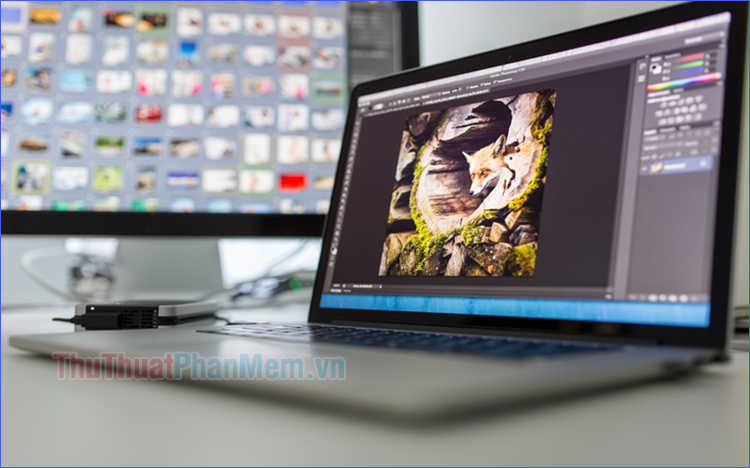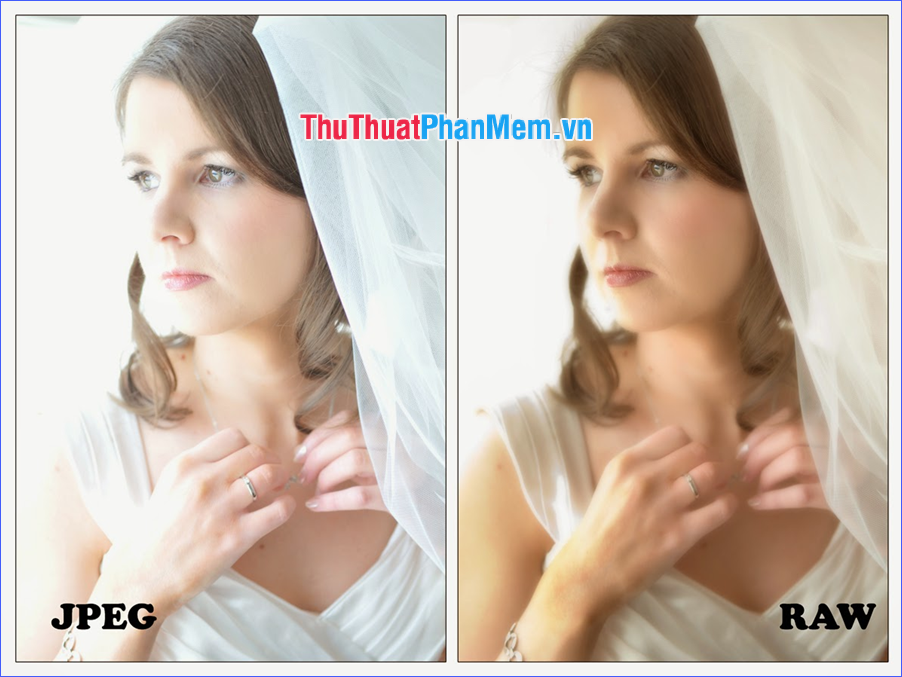What is raw? What is the Raw image file?
The popular image formats such as .JPG, .PNG or .BMP are probably well known. But have you ever heard of Raw? This is an important image file that anyone who is interested in photography needs to know. So what is Raw image? What is different from the usual image formats like .JPG? The following article will explain to you.

What is the Raw image file?
Raw is simply a type of image file, like JPEG. However, while JPEG images are considered to be processed images, Raw images - labeled as RAW on most cameras - are files that store image data in an unmodified state from Sensor. Most camera manufacturers use their own proprietary Raw file formats, such as Canon's .CR2, Nikon's .NEF and Sony's .ARW. Adobe has also created a Raw file format called .DNG ( digital negative ).
Technically, Raw data does not form an actual image in the same way as a standard JPG or PNG image, it is simply an information file that needs to be translated by an application capable of reading data. Raw material there.
Raw photo editing software
Every camera manufacturer that has its own Raw file format creates a dedicated application for translating Raw image data from their cameras. Examples are Nikon's View NX and Capture NX programs, Canon's DPP (Digital Photo Professional) and Sony's Imaging Edge software. Typically, each such program can only read the Raw file type provided by the same camera manufacturer, and cannot translate data from another Raw image.
However, the biggest market for Raw image processing software is the third-party market, typically Adobe's Camera Raw tool included in Adobe Photoshop, Adobe Bridge and Adobe Lightroom (all three programs use use the same "engine" to interpret Raw files). Many other applications are also dedicated to processing Raw, including Capture One Pro, Affinity Photo or On1 Photo RAW.

A major benefit of using a raw third-party processing program is that it is capable of editing almost any Raw format of different camera models (meanwhile, the software of the camera Camera companies usually only have the ability to read Raw files from their own cameras). There are also many other benefits to using a third-party application, such as generally better image quality, or a more efficient overall workflow.
Compare Raw with .JPG
Here are some of the main advantages of an unmodified picture, as opposed to a completely edited form like .JPG (can be easily printed or shared on social media without Need to handle):
- Raw files can withstand significant processing volumes without showing signs of deterioration in image quality.
- In addition, the raw process itself is considered non-destructive editing , which means that all adjustments are not actually applied to the Raw file itself, they are merely changes in the raw data interpretation and is only completed when the Raw file is saved or exported to another format, such as .JPG or .TIF.
For .JPG, images in this format are a compressed file, with fixed values for colors and tones. Therefore, any major adjustments on the .JPG image create a significant loss of image quality. The .TIF files are similar, however .TIF images are much less compressed, so they can withstand large edits with less quality loss than .JPG.

Through the article, I gave an overview of Raw photos along with some related information such as Raw photo editing software and compared Raw to .JPG. Hopefully the information just shared above will help you!
You should read it
- How to convert a Word file to an image file - Save the Word file as an image
- Instructions to change DMG file to ISO file
- How to Make an ICO File
- How to burn ISO image file to CD, DVD
- How to convert image file to PDF on Windows 10
- Does the JPEG file size accurately reflect the image quality?
- Insert images into PDF files with Foxit Reader
- How to convert PDF to JPG, PNG images
May be interested
- How to convert a PNG file to a JPG does not reduce image quality
 how to convert a png file to a jpg does not reduce image quality. the png file format is usually of a higher quality, but sometimes the png file size may be too large, which makes it difficult to edit images on weak devices.
how to convert a png file to a jpg does not reduce image quality. the png file format is usually of a higher quality, but sometimes the png file size may be too large, which makes it difficult to edit images on weak devices. - How to create GIF animations in Photoshop
 how to create gif animations in photoshop. with the ability to create gif images, photoshop is extremely powerful because it has merged with the photoshop layer to create a strong advantage. in this article, the software section will guide you how to create gif animations in photoshop.
how to create gif animations in photoshop. with the ability to create gif images, photoshop is extremely powerful because it has merged with the photoshop layer to create a strong advantage. in this article, the software section will guide you how to create gif animations in photoshop. - How to erase stains on photos, cleaning photos in Photoshop
 how to erase stains on photos, cleaning photos in photoshop. one of the features that helps users have a beautiful picture and limit the small errors on the image is the ability to clean the image and remove the details that make the image ugly.
how to erase stains on photos, cleaning photos in photoshop. one of the features that helps users have a beautiful picture and limit the small errors on the image is the ability to clean the image and remove the details that make the image ugly. - What is a layer? Learn about layers in Photoshop
 what is a layer? if you are new to and learn about photoshop then surely you hear the phrase layer very much and everywhere. but to understand and manage the layers in photoshop not everyone can grasp all. the software tips will tell you about layers in photoshop so you can understand them and use them
what is a layer? if you are new to and learn about photoshop then surely you hear the phrase layer very much and everywhere. but to understand and manage the layers in photoshop not everyone can grasp all. the software tips will tell you about layers in photoshop so you can understand them and use them - Synthetic beautiful pattern background
 pattern - motif is one of the oldest present decoration ever. with the motifs, they are very simple but not boring even though they are repeated. in this article, software tips will send you the most beautiful patterned background images.
pattern - motif is one of the oldest present decoration ever. with the motifs, they are very simple but not boring even though they are repeated. in this article, software tips will send you the most beautiful patterned background images. - How to clear blurred images quickly and effectively
 in the era of technology development today, the need for sharp images is an indispensable thing. but for some reason, your photos are blurred and blurry, so how to sharpen them. software tips will guide you how to clarify blurred images quickly and effectively.
in the era of technology development today, the need for sharp images is an indispensable thing. but for some reason, your photos are blurred and blurry, so how to sharpen them. software tips will guide you how to clarify blurred images quickly and effectively.






 What file is PAT? How to open, edit and convert PAT files
What file is PAT? How to open, edit and convert PAT files How to Hide a File in an Image File
How to Hide a File in an Image File How to convert a Word file to an image file - Save the Word file as an image
How to convert a Word file to an image file - Save the Word file as an image Instructions to change DMG file to ISO file
Instructions to change DMG file to ISO file How to Make an ICO File
How to Make an ICO File